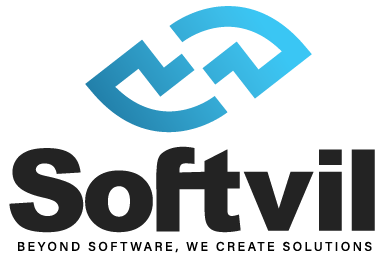Introduction
Generative AI, with its ability to automate tasks and unleash creative potential, is poised to revolutionize the landscape of software development. As software continues to evolve and become more complex, the demand for efficient and innovative development practices is at an all-time high. Generative AI presents a promising solution by combining automation and creativity in unprecedented ways. In this article, we delve into the transformative potential of generative AI in software development. We explore how this groundbreaking technology can streamline processes, enhance productivity, and drive innovation in the industry. By leveraging generative AI techniques, developers can unlock new possibilities and overcome traditional limitations.
Overview of Generative AI in Software Development
Generative AI, a branch of artificial intelligence, offers a transformative approach to software development. This section provides an overview of the fundamental principles of generative AI and its application in software development, emphasizing its ability to automate repetitive tasks and enhance creativity.
Fundamental Principles of Generative AI
Generative AI employs machine learning techniques to learn patterns from existing data and generate new content. Key principles include:
- Training on large datasets to capture underlying patterns and structures.
- Utilizing generative models like Generative Adversarial Networks (GANs) and Variational Autoencoders (VAEs) to generate novel content.
- Leveraging techniques such as reinforcement learning and transfer learning for enhanced performance.
Automation of Repetitive Tasks
Generative AI excels in automating repetitive tasks, offering significant benefits in software development:
- Code Generation: Generative AI can generate code snippets or even complete programs based on specifications, automating repetitive coding tasks and accelerating development processes.
- Bug Detection and Fixing: By learning from historical code repositories, generative AI models can identify potential bugs and suggest appropriate fixes, reducing manual effort and improving code quality.
Enhancement of Creativity
Generative AI also enhances creativity in software development:
- User Interface Design: By generating design layouts, suggesting color schemes, and providing interactive prototypes, generative AI assists in the creative process of designing user interfaces, fostering innovation, and improving user experience.
Natural Language Processing: Generative AI models can generate human-like text, enabling automated documentation generation, code summarization, and even chatbot development, expanding creative possibilities.
Code Generation and Automation
Generative AI has the potential to revolutionize code generation and automation in software development. This section delves into how generative AI can generate code snippets or complete programs based on specifications, as well as the benefits it brings to the development process.
Generating Code Snippets and Programs
Generative AI can automate the process of code generation by learning patterns and structures from existing codebases. Key points include:
- Training generative models on vast code repositories to learn programming conventions, syntax, and best practices.
- Generating code snippets or entire programs based on given specifications, reducing the manual effort required for repetitive coding tasks.
- Leveraging techniques like neural networks and reinforcement learning to ensure the generated code adheres to desired functionality and coding standards.
Benefits of Code Generation
Code generation through generative AI offers several advantages, transforming the software development process:
- Speeding up Development: By automating code generation, developers can significantly reduce the time required for routine coding tasks, enabling faster prototyping and accelerating overall development cycles.
- Reducing Errors: Generative AI models can minimize the likelihood of human errors by adhering to learned patterns and best practices. This results in more reliable and bug-free code.
- Enabling Rapid Prototyping: Code generation facilitates quick iteration and experimentation, allowing developers to explore multiple design alternatives and rapidly build functional prototypes.
Bug Detection and Fixing
Generative AI has the potential to revolutionize bug detection and fixing in software development. This section explores how generative AI can help identify potential bugs in code through learned patterns and how it can suggest appropriate fixes or patches for the identified bugs.
Identifying Potential Bugs through Learned Patterns
Generative AI models can analyze vast code repositories to learn patterns and structures, enabling them to identify potential bugs. Key points include:
- Training generative models on large datasets of code to understand common coding mistakes and error patterns.
- Leveraging machine learning techniques to detect anomalies and deviations from established coding conventions.
- Utilizing pattern recognition capabilities to identify potential bugs, logic errors, or performance bottlenecks that might be missed through traditional manual code reviews.
Suggesting Fixes or Patches for Identified Bugs
Generative AI models can not only detect bugs but also propose appropriate fixes or patches. Key points include:
- Learning from historical code repositories and open-source projects to understand common bug fixes and best practices.
- Applying knowledge gained from the training data to suggest code changes that resolve the identified bugs.
- Incorporating techniques like program synthesis and automated refactoring to generate optimized and bug-free code.
Test Case Generation and Optimization
Generative AI offers significant potential in automating the generation and optimization of test cases, a critical aspect of software development. This section explores how generative AI can automate the generation of diverse and comprehensive test cases and discusses the advantages it brings in terms of improving test coverage, identifying edge cases, and enhancing software quality.
Automating Test Case Generation
Generative AI can automate the process of test case generation by leveraging its ability to learn from existing data and generate new content. Key points include:
- Training generative models on a wide range of test cases and associated outcomes to learn patterns and relationships.
- Utilizing generative models to generate new test cases that cover various scenarios, inputs, and potential edge cases.
- Applying techniques like reinforcement learning to optimize test case generation based on desired coverage criteria or specific objectives.
Advantages in Test Coverage and Software Quality
Generative AI-driven test case generation offers several advantages in improving test coverage, identifying edge cases, and enhancing software quality. Key points include:
- Improved Test Coverage: Generative AI can generate a diverse set of test cases, ensuring better coverage of different code paths and scenarios that might be missed through manual test case creation.
- Identification of Edge Cases: Generative AI models can identify and generate test cases that target specific edge or boundary conditions, helping uncover hidden vulnerabilities or rare scenarios that might lead to software failures.
- Enhanced Software Quality: By automating test case generation and optimization, generative AI reduces the reliance on manual testing, leading to more efficient and thorough testing processes. This, in turn, improves software quality by detecting and addressing issues early in the development cycle.
User Interface Design and Natural Language Processing
Generative AI holds immense potential in enhancing user interface design and natural language processing tasks. This section explores how generative AI can aid in designing user interfaces by generating layouts, suggesting color schemes, or providing interactive prototypes. It also discusses the role of generative AI in natural language processing tasks such as chatbots, virtual assistants, and automated documentation generation.
User Interface Design
Generative AI can revolutionize user interface design by leveraging its ability to learn from existing design patterns and generate new content. Key points include:
- Layout Generation: Generative AI models can generate diverse and innovative design layouts based on user requirements, streamlining the design process and providing new design possibilities.
- Color Scheme Suggestions: By analyzing color combinations and aesthetics from a large dataset, generative AI can suggest visually appealing and harmonious color schemes, enhancing the overall user experience.
- Interactive Prototypes: Generative AI can create interactive prototypes that simulate user interactions, allowing designers to visualize and refine user interfaces before implementation.
Natural Language Processing
Generative AI plays a crucial role in natural language processing, enabling various applications such as chatbots, virtual assistants, and automated documentation generation. Key points include:
- Chatbots and Virtual Assistants: Generative AI models can generate human-like text responses based on learned patterns and dialogue structures, making chatbots and virtual assistants more conversational and engaging.
- Automated Documentation Generation: By understanding and summarizing code, generative AI can automatically generate documentation, saving time and effort in the software development process. It can also assist in code summarization for better understanding and maintainability.
Challenges and Ethical Considerations
While generative AI brings tremendous potential to software development, it also comes with its own set of challenges and ethical considerations. This section addresses the challenges and limitations associated with generative AI in software development and discusses important ethical considerations that need to be taken into account.
Challenges and Limitations
Data Limitations: Generative AI heavily relies on training data, and the availability and quality of data can impact the performance and generalization of generative models. Limited or biased training data can lead to inaccurate or biased generated content.
Lack of Interpretability: Generative AI models often lack interpretability, making it challenging to understand the reasoning behind their generated outputs. This can hinder debugging, maintenance, and the ability to trust the generated results.
Control over Output: Generative AI models may generate outputs that do not meet the desired specifications or adhere to coding standards. This requires careful tuning and fine-tuning of models to ensure generated content meets the intended requirements.
Ethical Considerations
Bias in Generated Code: Generative AI models can inadvertently learn biases present in the training data, leading to the generation of biased or discriminatory code. This raises concerns about fairness and inclusivity in software development.
Intellectual Property Concerns: The use of generative AI in software development raises questions about intellectual property rights, as the models learn from existing codebases. Care must be taken to respect copyright and license agreements when generating code.
Human Oversight and Accountability: While generative AI can automate tasks, human oversight and intervention are crucial. Developers need to ensure that they review and validate the generated code, maintaining accountability and responsibility for the final product.
Future Outlook and Conclusion
The future prospects of generative AI in software development are incredibly promising, with potential advancements that can further revolutionize the industry. This section explores the future outlook of generative AI and summarizes its transformative impact in automating tasks, enhancing creativity, and improving software development processes. It concludes with a reflection on the exciting opportunities and challenges that lie ahead.
Future Prospects and Potential Advancements
Advanced Code Generation: Generative AI holds the potential to evolve code generation techniques, enabling the generation of complex and optimized code structures while adhering to specific performance or security constraints.
Smarter Bug Detection and Fixing: Future advancements in generative AI can lead to more sophisticated bug detection and fixing techniques, capable of identifying subtle or domain-specific bugs and suggesting more accurate fixes.
AI-Driven Design Assistance: Generative AI has the potential to become an invaluable design assistant, providing intelligent suggestions for UI/UX design, layout generation, and real-time feedback during the design process.
Transformative Impact and Reflection
Generative AI has already made a transformative impact on software development, automating repetitive tasks and fostering creativity. It has accelerated development cycles, improved code quality, and unlocked new design possibilities. It has also shown great potential in natural language processing tasks, chatbot development, and automated documentation generation.
Wrapping it up
In conclusion, generative AI is revolutionizing software development by automating tasks, enhancing creativity, and improving overall efficiency. The future holds exciting possibilities for the advancement of generative AI in code generation, bug detection, design assistance, and natural language processing. As we navigate this transformative journey, it is essential to stay vigilant, ethical, and mindful of the challenges and responsibilities that come with harnessing the power of generative AI in software development. With careful consideration and responsible adoption, generative AI will continue to shape the future of software development, driving innovation and pushing the boundaries of what is possible.

